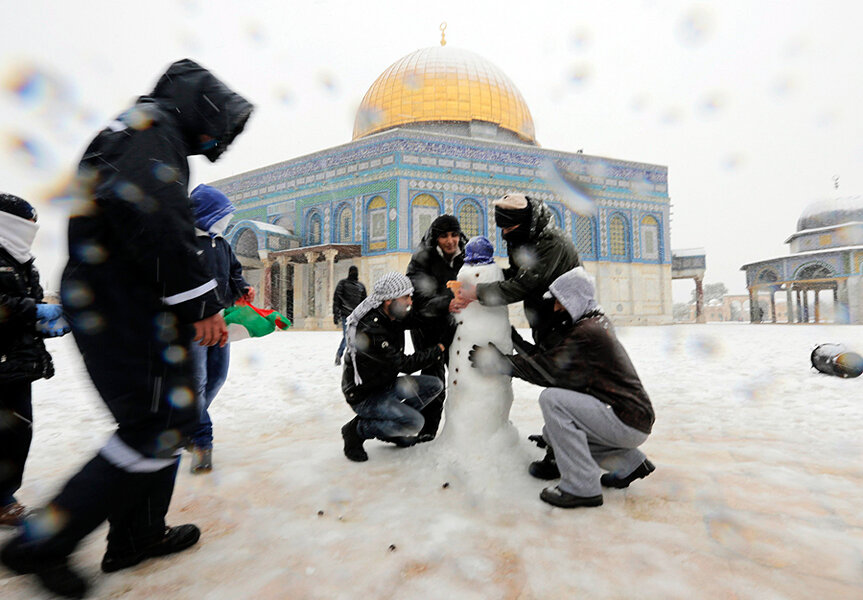A foot of snow in the Middle East? Rare storm brings delight and distress.
| Jerusalem
Updated at 1:05 p.m. Friday, Dec. 13.
The heaviest December snowstorm in 60 years is sweeping through Jerusalem, prompting Palestinian kids with plastic-bag mittens to engage in rousing snowball fights. Others are just reveling in the white stuff as it continues to fall for a second straight day, nearing a foot on the ground despite significant melting.
Across the Middle East, landmarks from Istanbul's Blue Mosque to the Roman ruins of Baalbek in Lebanon are blanketed in snow, as seen in this Washington Post photo gallery. And Cairo got its first snowfall in decades.
But while snow is a rare if cold delight for many, the stormy weather – expected to worsen tonight before winding down – brings a harsher sting for the 2.2 million Syrian refugees in the region.
Nearly half of those Syrians are in Lebanon, where the refugee population has grown tenfold since last December, according to Oxfam. Of those refugees, about 2 in 3 are living in the cold Bekaa Valley or the northern part of the country, where the wintry conditions are especially severe. Many are living in tents and some are struggling to afford wood for their stoves, which costs about $5 a bag.
Now other refugees are arriving, seeking shelter with those already in Lebanon, writes Kareem Shaheen of Lebanon’s Daily Star newspaper, who spent a night with a family in Zahle, Lebanon.
“We’ve been here for two days and we have no clothing or blankets, and people are feeding us,” says a 54-year-old Syrian man, who chose to remain anonymous, surrounded by his three sons seeking some warmth in Khaled’s tent. “Refugees are feeding refugees. We don’t know what will happen to us. We don’t even have shoes.”
In Israel, the snow and rain caused major highways to shut down, and even the Tel Aviv's international airport briefly closed. In Gaza, heavy flooding pushed thousands from their homes, many taking shelter in schools. In Jordan, many refugees saw only rain, but that caused significant problems as well, flooding tents and sending sewage into the muddy pathways of camps.
United Nations High Commissioner for Refugees Antonio Guterres has called the displacement of Syrian citizens – both the 6 million within the country and the more than 2 million outside its borders – "unparalleled in recent history." Indeed, the Syrian refugee crisis, now the largest in the world, has stretched the capacity of international aid organizations as well as local host countries.
Oxfam, for one, is planning to distribute blankets, gas heaters, and plastic sheeting for tents to better protect against the snow and earlier this month Downtown Abbey star Michelle Dockery helped the agency launch a $1.6 million campaign, “12 days of Giving,” to support such efforts.
While aid agencies have had difficulty raising funds for the Syrian refugee crisis, which unlike an earthquake is complicated by politics, perhaps the “white Christmas” weather will spur more giving.









